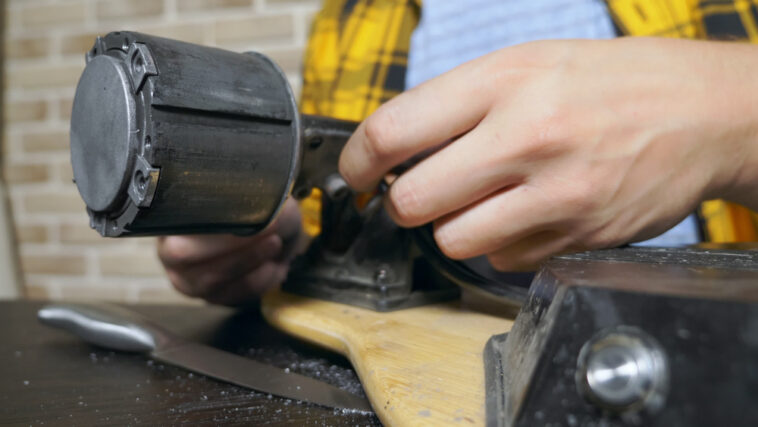Safety Tips For DIY Electric Skateboards
DIY electric skateboards have gained popularity as an exciting and cost-effective way to experience the thrill of electric transportation. However, it's crucial to prioritize safety when building and riding these customized boards. In this comprehensive guide, we'll provide you with essential safety tips to ensure that your DIY electric skateboard adventures are enjoyable, secure, and accident-free. Let's dive in!
Understanding DIY Electric Skateboards
Before we delve into safety tips, let's briefly understand what DIY electric skateboards are. These boards are self-assembled electric skateboards that allow enthusiasts to create a personalized electric transportation device by combining a skateboard deck with various components, including motors, batteries, controllers, and drivetrains. It's crucial to approach DIY electric skateboards with caution and prioritize safety throughout the building and riding process.
Safety Measures Before Building Your DIY Electric Skateboard
Building a DIY electric skateboard requires careful planning and consideration for safety. Follow these measures before embarking on your project:
- Research and Education: Gain a comprehensive understanding of electric skateboard components, their compatibility, and safety guidelines through reputable sources, online forums, and tutorials.
- Quality Components: Select high-quality components from trusted manufacturers that comply with safety standards and have positive reviews from the electric skateboard community.
- Battery Safety: Learn about lithium-ion battery safety, proper handling, storage, and charging techniques to minimize the risk of fire or explosion.
- Understanding Electronics: Familiarize yourself with basic electronics, wiring, and soldering techniques, or seek assistance from experienced individuals to ensure proper assembly and minimize electrical hazards.

Safety Considerations During the Building Process
While assembling your DIY electric skateboard, keep these safety considerations in mind:
- Electrical Wiring: Ensure proper insulation and secure connections to prevent short circuits, overheating, or electrical malfunctions.
- Mechanical Stability: Verify that all components, including motors, pulleys, and belts, are securely attached and aligned, minimizing the risk of sudden failures or accidents during operation.
- Weight Distribution: Maintain an appropriate weight distribution to promote stability and maneuverability, preventing unexpected loss of control.
- Water Resistance: Consider incorporating water-resistant or waterproofing measures to protect electrical components from moisture damage, especially if riding in wet conditions.
Essential Safety Gear for Riding an Electric Skateboard
Before hopping on your DIY electric skateboard, make sure you have the necessary safety gear:
- Helmet: A certified skateboard helmet is a must to protect your head from potential impacts and falls.
- Protective Pads: Elbow pads, knee pads, and wrist guards provide added protection against scrapes, cuts, and fractures during accidents.
- Appropriate Footwear: Wear sturdy, closed-toe shoes with good traction to maintain stability and protect your feet.
- Visibility Accessories: Consider using reflective clothing or accessories, especially when riding at night, to increase visibility to motorists and pedestrians.
Tips for Safe Riding Practices
To ensure safe and enjoyable rides on your DIY electric skateboard, follow these best practices:
- Start Slowly: Familiarize yourself with the skateboard's controls and acceleration gradually to build confidence and maintain control.
- Choose Suitable Riding Locations: Opt for smooth, well-maintained surfaces away from heavy traffic, pedestrians, and obstacles.
- Be Aware of Surroundings: Continuously scan the environment, anticipate potential hazards, and adjust your riding style accordingly.
- Maintain a Safe Speed: Ride at a speed appropriate for the terrain and your skill level, avoiding excessive speeds that could compromise your ability to react to obstacles or emergencies.
- Practice Braking Techniques: Master proper braking techniques to ensure smooth and controlled deceleration, minimizing the risk of losing control or experiencing sudden stops.

Maintaining and Inspecting Your DIY Electric Skateboard
Regular maintenance and inspections are crucial for safe electric skateboard operation. Follow these guidelines:
- Battery Care: Adhere to proper battery maintenance, charging cycles, and storage guidelines provided by the manufacturer.
- Component Inspections: Regularly inspect all components, including belts, pulleys, motors, and controllers, for signs of wear, damage, or loose connections.
- Tire Maintenance: Check tire pressure, tread condition, and overall tire health regularly to ensure optimal traction and stability.
- Brake Testing: Regularly test and adjust the braking system to maintain reliable and responsive braking performance.
- Cleaning and Lubrication: Keep your skateboard clean and lubricate moving parts as recommended by the manufacturer to maintain optimal performance.
Troubleshooting and Handling Emergency Situations
In the event of technical issues or emergencies, it's essential to know how to respond appropriately:
- Technical Troubleshooting: Familiarize yourself with troubleshooting techniques for common issues such as motor failure, connectivity problems, or battery-related concerns.
- Emergency Stops: Learn and practice emergency stopping techniques to quickly bring the skateboard to a halt when necessary.
- Personal Safety During Falls: If you fall, try to roll with the fall to dissipate impact energy, protect your head with your arms, and aim to fall on the more protected parts of your body, such as your knees and forearms.
Pre-Ride Safety Checklist
Before each ride on your DIY electric skateboard, go through this checklist to ensure everything is in proper working order:
- Battery: Check the battery charge level and make sure it is securely connected to the skateboard.
- Motor and Drivetrain: Inspect the motor, belts, pulleys, and drivetrain for any signs of damage, loose parts, or misalignment.
- Brakes: Test the brakes to ensure they are functioning properly and provide adequate stopping power.
- Remote Control: Check the remote control's battery level and ensure it is synced with the skateboard for responsive control.
- Lights and Reflectors: Confirm that any lights or reflectors on the skateboard are working to enhance visibility during low-light conditions.

Riding in Different Weather Conditions
Different weather conditions require additional precautions. Consider these tips for riding your DIY electric skateboard in various weather scenarios:
- Rainy Conditions: Avoid riding in heavy rain or on wet surfaces as it can significantly reduce traction and increase the risk of accidents. If caught in light rain, ride cautiously and maintain a slower speed.
- Hot Weather: Stay hydrated and take regular breaks in hot weather to prevent overheating. Avoid prolonged exposure to direct sunlight, as it can affect battery performance and potentially lead to overheating.
- Cold Weather: Cold temperatures can affect battery performance, so keep an eye on your battery's charge level and be prepared for potential reduced range. Bundle up in appropriate clothing to stay warm and maintain dexterity.
- Wind: Be cautious when riding in windy conditions, as strong gusts can affect stability and control. Reduce your speed and be prepared for sudden changes in wind direction.
- Night Riding: If riding at night, wear reflective clothing, use lights on your skateboard, and choose well-lit routes to enhance visibility and ensure that others can see you.
Public Road and Traffic Safety
When riding your DIY electric skateboard on public roads or in areas with traffic, follow these safety guidelines:
- Know the Local Regulations: Familiarize yourself with local laws and regulations regarding electric skateboards, including any age restrictions, speed limits, and prohibited areas.
- Be Predictable: Ride predictably, follow traffic rules, and signal your intentions to other road users.
- Stay Alert and Aware: Pay attention to your surroundings, watch for vehicles, pedestrians, and potential hazards, and always assume that others may not see you.
- Choose the Right Routes: Select routes with dedicated bike lanes or lower traffic volumes whenever possible, and avoid busy intersections or areas with heavy congestion.
- Avoid Distractions: Do not use your phone or any other distractions while riding. Keep your focus on the road and maintain situational awareness.
Battery Safety and Charging Tips
Proper battery safety and charging practices are essential for safe operation of your DIY electric skateboard. Consider these guidelines:
- Use Manufacturer-Approved Chargers: Only use chargers recommended by the skateboard manufacturer to avoid compatibility issues and potential safety hazards.
- Avoid Overcharging: Do not leave your battery plugged in for extended periods once it is fully charged. Overcharging can degrade battery performance and pose a safety risk.
- Store Batteries Safely: When not in use, store your electric skateboard and spare batteries in a cool, dry place, away from direct sunlight, extreme temperatures, or flammable materials.
- Monitor Battery Performance: Regularly check the battery's performance, including its voltage, temperature, and overall health, to identify any abnormalities or signs of deterioration.
- Follow Charging Instructions: Adhere to the manufacturer's guidelines for charging time, charging cycles, and any specific instructions for your battery type.
Safety Tips for DIY Electric Skateboard Maintenance
Proper maintenance ensures the longevity and safe operation of your DIY electric skateboard. Consider these tips:
- Regular Inspections: Routinely inspect all components for wear, damage, or signs of fatigue. This includes motors, belts, pulleys, wheels, trucks, and electronic connections.
- Tire Maintenance: Check tire pressure regularly and ensure tires have sufficient tread depth for optimal traction and stability.
- Tighten Loose Parts: Regularly check and tighten any loose bolts, screws, or fasteners to maintain structural integrity.
- Keep Electronics Dry: Avoid exposing the electrical components to moisture or water. If riding in wet conditions, take precautions such as using waterproofing measures or protective covers.
- Educate Yourself: Stay updated on the latest maintenance techniques and resources specific to your DIY electric skateboard model or components.
Conclusion
Building and riding a DIY electric skateboard can be an exhilarating experience, but safety should always be the top priority. By following these safety tips, you can minimize risks, maximize enjoyment, and ensure a safe ride. Remember to continuously educate yourself, stay informed about best practices, and invest in quality components and safety gear. Happy and safe riding!




